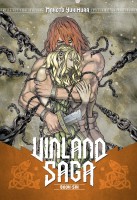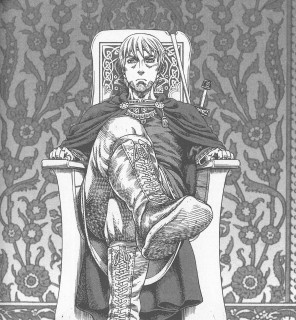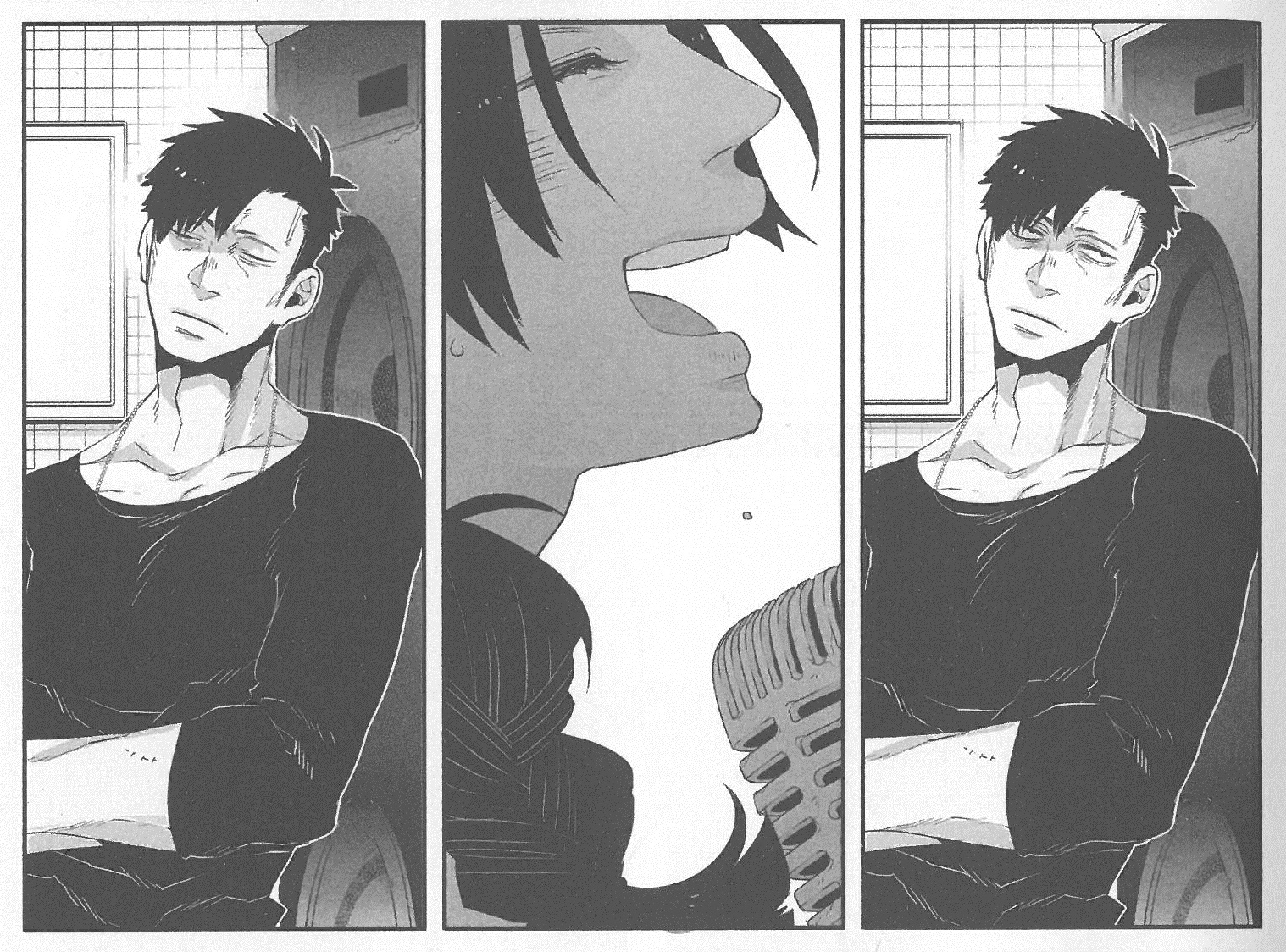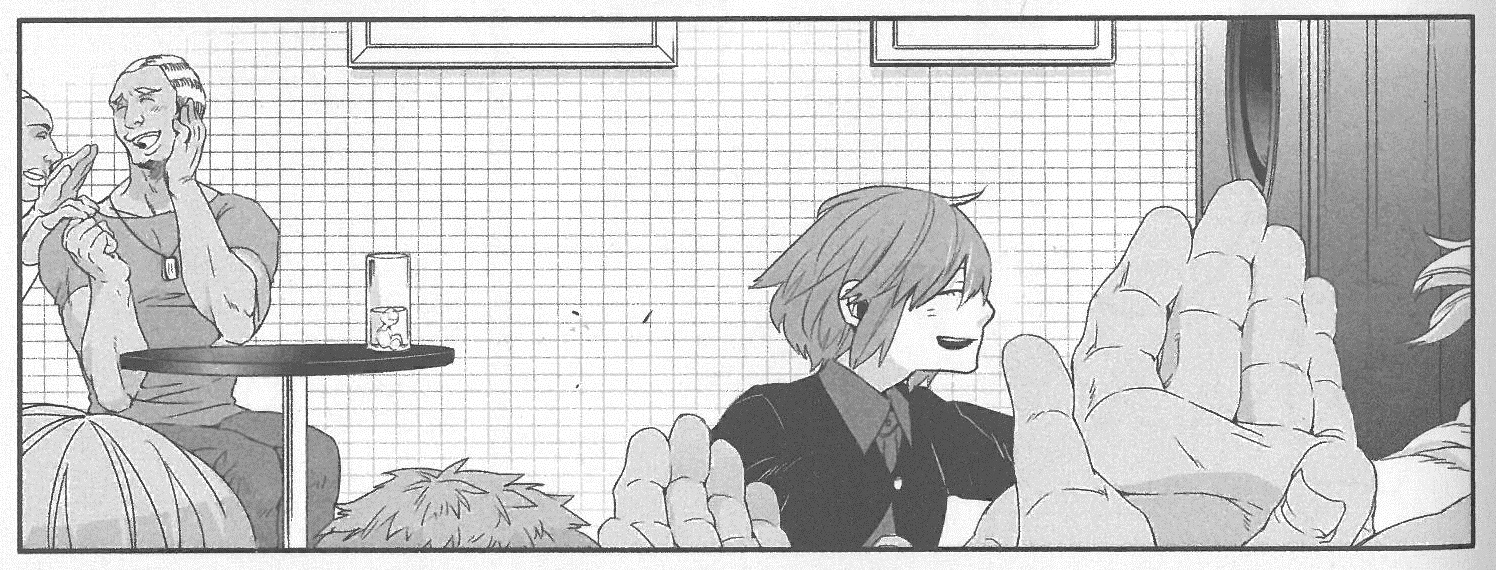My News and Reviews
A few different things were posted at Experiments in Manga last week. The most recent manga giveaway is currently underway, for one, and here’s still time to enter for a chance to win Barakamon, Volume 1 by Satsuki Yoshino. Last week I reviewed Vinland Saga, Omnibus 6 by Makoto Yukimura. The series continues to impress me a great deal with its story telling and character development. The fate of the series in English will be in part determined by how well the sixth and seventh omnibuses do (the seventh omnibus is currently scheduled to be released in December); I truly hope that Kodansha will be able to release more because Vinland Saga is fantastic. Finally, over the weekend, I posted the Bookshelf Overload for October.
I’ve been extremely busy with all sorts of life stuff, so while I’m sure there were plenty of interesting things going on in the realm of manga online, there were only two that really caught my eye last week: Shojo Beat posted a short interview with Rinko Ueda and Chris Butcher wrote about his experience interviewing Masashi Kishimoto at New York Comic Con. Also as a heads up, because I am so extraordinarily caught up in things going on at work and at home right now, I’ve decided to go a little easier on myself with my blogging schedule for November (and probably for the first half of December as well). Instead of the usual Monday-Wednesday-Friday posting schedule, in the upcoming weeks I may just be posting on Monday and Thursday. Hopefully things will calm down and I can get back to writing more soon!
Quick Takes
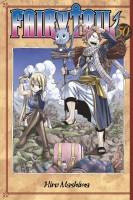 Fairy Tail, Volume 50 by Hiro Mashima. After so many arcs in which the Fairy Tail guild was fighting to save the world, I’m particularly enjoying the beginning of this most recent arc in which Fairy Tail doesn’t technically even exist anymore. Although there are some epic, world-altering developments occurring in the background, for the moment the story is focusing on the much more personal crises of the disbanded guild as it rebuilds itself. It’s a nice change of pace, though I’m fairly certain it won’t last for very long. A year or so has passed since the members of Fairy Tail parted their separate ways. Quite a few of the magic users have managed to power up during that time, allowing Mashima the opportunity to come up with some exciting and interesting new skills for them in order to show just how badass they’ve become (and they were strong to begin with). Some of the fan service focusing on the female characters in Fairy Tail continues to feel very out-of-place and distracting, but at least the women are frequently some of the strongest and most well-developed characters. The male characters are the subject of fan service from time to time, too, though never to the same extent.
Fairy Tail, Volume 50 by Hiro Mashima. After so many arcs in which the Fairy Tail guild was fighting to save the world, I’m particularly enjoying the beginning of this most recent arc in which Fairy Tail doesn’t technically even exist anymore. Although there are some epic, world-altering developments occurring in the background, for the moment the story is focusing on the much more personal crises of the disbanded guild as it rebuilds itself. It’s a nice change of pace, though I’m fairly certain it won’t last for very long. A year or so has passed since the members of Fairy Tail parted their separate ways. Quite a few of the magic users have managed to power up during that time, allowing Mashima the opportunity to come up with some exciting and interesting new skills for them in order to show just how badass they’ve become (and they were strong to begin with). Some of the fan service focusing on the female characters in Fairy Tail continues to feel very out-of-place and distracting, but at least the women are frequently some of the strongest and most well-developed characters. The male characters are the subject of fan service from time to time, too, though never to the same extent.
 Tokyo Ghoul, Volume 1-3 by Sui Ishida. The glut of vampire and zombie manga continues—and I’m not really a devotee of either of those subgenres—so I especially appreciate that Tokyo Ghoul makes use of an entirely different creature, the titular ghoul. In the case of this particular manga series, ghouls largely pass as normal humans assuming that they can master their intense hunger for human flesh. After an encounter with a ghoul that nearly leaves him dead, Kaneki finds himself in the unique position of partly belonging to both the human world and the world of the ghouls, and yet it will be a struggle for him to survive in either of them. In Tokyo Ghoul, humans are just as capable of being monsters. And Ishida isn’t afraid of killing off prominent characters, whether they be human or ghoul, so there is a constant sense of danger. Sadly, I think the emotional impact of the deaths was somewhat diminished since readers hadn’t yet had the chance to really get to know the characters involved as individuals. Still, kudos to Ishida for potentially making good use of some shocking, unexpected developments, especially as some early parts of the first volume were a little predictable.
Tokyo Ghoul, Volume 1-3 by Sui Ishida. The glut of vampire and zombie manga continues—and I’m not really a devotee of either of those subgenres—so I especially appreciate that Tokyo Ghoul makes use of an entirely different creature, the titular ghoul. In the case of this particular manga series, ghouls largely pass as normal humans assuming that they can master their intense hunger for human flesh. After an encounter with a ghoul that nearly leaves him dead, Kaneki finds himself in the unique position of partly belonging to both the human world and the world of the ghouls, and yet it will be a struggle for him to survive in either of them. In Tokyo Ghoul, humans are just as capable of being monsters. And Ishida isn’t afraid of killing off prominent characters, whether they be human or ghoul, so there is a constant sense of danger. Sadly, I think the emotional impact of the deaths was somewhat diminished since readers hadn’t yet had the chance to really get to know the characters involved as individuals. Still, kudos to Ishida for potentially making good use of some shocking, unexpected developments, especially as some early parts of the first volume were a little predictable.
 Yamada-kun and the Seven Witches, Volume 4 by Miki Yohsikawa. Although the fan service in Fairy Tail tends to bug me, the fan service in Yamada-kun and the Seven Witches doesn’t really bother me at all, probably because it’s better incorporated into the story itself. Admittedly, it can still be gratuitous from time to time. Since the manga in part deals with body-swapping, it makes sense that there would be some focus on the characters’ physical traits. Plus this particular volume includes the obligatory beach and onsen scenes. One thing that really impresses me about Yoshikawa’s artwork in the Yamada-kun and the Seven Witches is that it’s obvious from the characters’ facial expressions and body language when there has been some swapping going on. This actually ends up being explicitly pointed out in the series when one character develops a crush on a specific combination of personality and body type. The witch count continues to grow in the series as does Yamada’s group of friends while he begins to work out a theory explaining why everyone has the powers that they do. I’m still really enjoying Yamada-kun and the Seven Witches. Though largely a comedy, it has some heart to it as well.
Yamada-kun and the Seven Witches, Volume 4 by Miki Yohsikawa. Although the fan service in Fairy Tail tends to bug me, the fan service in Yamada-kun and the Seven Witches doesn’t really bother me at all, probably because it’s better incorporated into the story itself. Admittedly, it can still be gratuitous from time to time. Since the manga in part deals with body-swapping, it makes sense that there would be some focus on the characters’ physical traits. Plus this particular volume includes the obligatory beach and onsen scenes. One thing that really impresses me about Yoshikawa’s artwork in the Yamada-kun and the Seven Witches is that it’s obvious from the characters’ facial expressions and body language when there has been some swapping going on. This actually ends up being explicitly pointed out in the series when one character develops a crush on a specific combination of personality and body type. The witch count continues to grow in the series as does Yamada’s group of friends while he begins to work out a theory explaining why everyone has the powers that they do. I’m still really enjoying Yamada-kun and the Seven Witches. Though largely a comedy, it has some heart to it as well.

